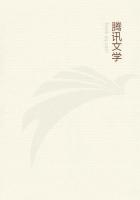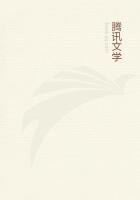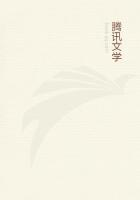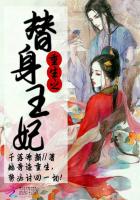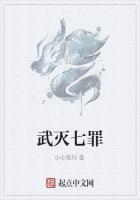All these deive particulars may be regarded by the light of the accompanying diagram; wherein the letter A marks the starting-point of the ducts that extend from the aorta; the letters KKmark the heads of the testicles and the ducts descending thereunto;the ducts extending from these along the testicles are marked MM; the ducts turning back, in which is the white fluid, are marked BB; the penis D; the bladder E; and the testicles XX.
(By the way, when the testicles are cut off or removed, the ducts draw upwards by contraction. Moreover, when male animals are young, their owner sometimes destroys the organ in them by attrition;sometimes they castrate them at a later period. And I may here add, that a bull has been known to serve a cow immediately after castration, and actually to impregnate her.)So much then for the properties of testicles in male animals.
In female animals furnished with a womb, the womb is not in all cases the same in form or endowed with the same properties, but both in the vivipara and the ovipara great diversities present themselves. In all creatures that have the womb close to the genitals, the womb is two-horned, and one horn lies to the right-hand side and the other to the left; its commencement, however, is single, and so is the orifice, resembling in the case of the most numerous and largest animals a tube composed of much flesh and gristle. Of these parts one is termed the hystera or delphys, whence is derived the word adelphos, and the other part, the tube or orifice, is termed metra. In all biped or quadruped vivipara the womb is in all cases below the midriff, as in man, the dog, the pig, the horse, and the ox; the same is the case also in all horned animals. At the extremity of the so-called ceratia, or horns, the wombs of most animals have a twist or convolution.
In the case of those ovipara that lay eggs externally, the wombs are not in all cases similarly situated. Thus the wombs of birds are close to the midriff, and the wombs of fishes down below, just like the wombs of biped and quadruped vivipara, only that, in the case of the fish, the wombs are delicately formed, membranous, and elongated; so much so that in extremely small fish, each of the two bifurcated parts looks like a single egg, and those fishes whose egg is described as crumbling would appear to have inside them a pair of eggs, whereas in reality each of the two sides consists not of one but of many eggs, and this accounts for their breaking up into so many particles.
The womb of birds has the lower and tubular portion fleshy and firm, and the part close to the midriff membranous and exceedingly thin and fine: so thin and fine that the eggs might seem to be outside the womb altogether. In the larger birds the membrane is more distinctly visible, and, if inflated through the tube, lifts and swells out; in the smaller birds all these parts are more indistinct.
The properties of the womb are similar in oviparous quadrupeds, as the tortoise, the lizard, the frog and the like; for the tube below is single and fleshy, and the cleft portion with the eggs is at the top close to the midriff. With animals devoid of feet that are internally oviparous and viviparous externally, as is the case with the dogfish and the other so-called Selachians (and by this title we designate such creatures destitute of feet and furnished with gills as are viviparous), with these animals the womb is bifurcate, and beginning down below it extends as far as the midriff, as in the case of birds. There is also a narrow part between the two horns running up as far as the midriff, and the eggs are engendered here and above at the origin of the midriff; afterwards they pass into the wider space and turn from eggs into young animals. However, the differences in respect to the wombs of these fishes as compared with others of their own species or with fishes in general, would be more satisfactorily studied in their various forms in specimens under dissection.
The members of the serpent genus also present divergencies either when compared with the above-mentioned creatures or with one another. Serpents as a rule are oviparous, the viper being the only viviparous member of the genus. The viper is, previously to external parturition, oviparous internally; and owing to this perculiarity the properties of the womb in the viper are similar to those of the womb in the selachians. The womb of the serpent is long, in keeping with the body, and starting below from a single duct extends continuously on both sides of the spine, so as to give the impression of thus being a separate duct on each side of the spine, until it reaches the midriff, where the eggs are engendered in a row; and these eggs are laid not one by one, but all strung together. (And all animals that are viviparous both internally and externally have the womb situated above the stomach, and all the ovipara underneath, near to the loin. Animals that are viviparous externally and internally oviparous present an intermediate arrangement; for the underneath portion of the womb, in which the eggs are, is placed near to the loin, but the part about the orifice is above the gut.)Further, there is the following diversity observable in wombs as compared with one another: namely that the females of horned nonambidental animals are furnished with cotyledons in the womb when they are pregnant, and such is the case, among ambidentals, with the hare, the mouse, and the bat; whereas all other animals that are ambidental, viviparous, and furnished with feet, have the womb quite smooth, and in their case the attachment of the embryo is to the womb itself and not to any cotyledon inside it.
The parts, then, in animals that are not homogeneous with themselves and uniform in their texture, both parts external and parts internal, have the properties above assigned to them.

